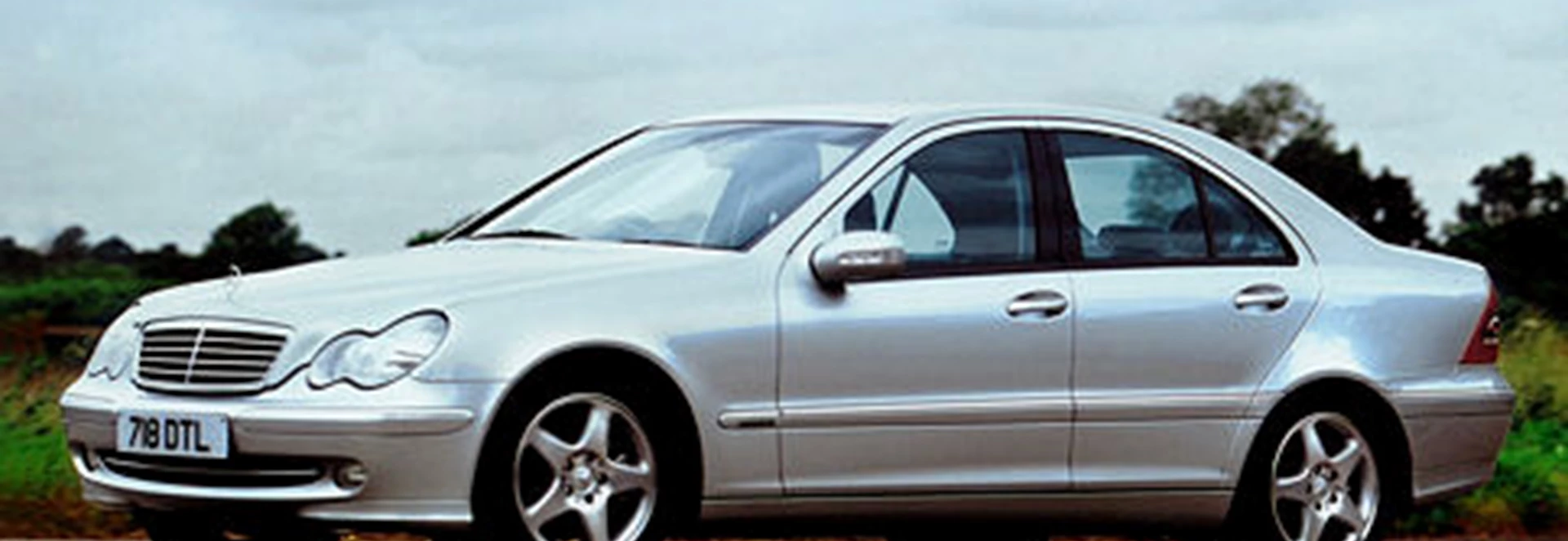An important, if unquantifiable, measure of a car is how much you enjoy the fact that it is sitting outside your house. The Mercedes C-Class scores well here because it is - in my view, anyway, take it or leave it - one of the most attractively styled cars of its size and type on the market. It was launched in 2000, and back then there was a degree of sniffiness in the press (well, CARkeys specifically) about its multiple-headlamp front end. Three years later it looks less strange, more refined. I like it.I like the way the C-Class goes about most things, too. Mercs are often criticised by journalists more in tune with hot hatches for being dull to drive, but I don't think that's the case at all. The C-Class isn't nimble, and it isn't exciting, but it's sturdy and gives the impression of being perfectly happy on almost any road.That applies to the test car as much as any other model in the range, which is perhaps surprising considering this is the C 220 CDI, with a turbo diesel engine under the bonnet. The argument has been well rehearsed in the past, but here goes again: too many manufacturers these days are making a pig's ear of the way their diesels handle because they can't properly compensate for the extra weight of the diesel unit.Not so Mercedes. I dare say that if you drove this car and a petrol version in the same hour you would notice the difference, but considered on its own the CDI both rides and handles very well.The engine itself is fairly gutsy, with a maximum power output of 143bhp, but it doesn't dominate the driving experience at all (apart from the fact that you're aware of the clatter it makes at most speeds). Performance is generally good, especially in the mid-range, which is really what you would expect of a decent turbo diesel these days. The general impression is that this is a competent unit rather than an exceptional one.Our car was an automatic, which meant that the consistent Mercedes habit of fitting a foot-operated parking brake was only mildly annoying in this case - it becomes totally absurd in car with manual transmissions, as anyone who has tried to do a hill start in one will know.Saying of a German car that it has good build quality often seems like a Pavlovian response rather than the result of any detailed thought on the matter, but the C-Class does feel very solidly constructed. This is one of the two aspects that makes it seem worth the rather high asking price, the other being its reassuring road manners.Against that, the look of the interior didn't seem to square with the cost of ownership. The test car was in Avantgarde trim with light-coloured fittings, and while this made the passenger compartment feel spacious and airy, it also made the dashboard in particular look like it was made from very cheap plastic. During my time with the C 220 I couldn't quite bring to mind what other car it reminded me of in this respect, but I've worked it out now. It's the Citroen C3. (That spluttering noise you can hear in the background is the sound of communal apoplectic fits among the DaimlerChrysler board.)Ah, well. I dare say one could become used to the sense of interior cheapness, and instead enjoy the lovely shape, the mid-range performance and the fine handling. It would put me in a good mood as I wrote a letter to Mercedes explaining how a proper handbrake works.Second opinion: I agree that the light-coloured interior upholstery and fascia material didn't do this car any favours, and I'm certainly no fan of the parking brake arrangement. But Mercedes does indeed know how to set up a diesel saloon. The test car was right at home sweeping along B-roads as well as piling on the motorway miles, and 232lb/ft of torque from 1800rpm allowed it to get off its mark pretty smartly when overtaking. The Avantgarde specification with a certain amount of what Mercedes calls "alu quadra" aluminium trim, plus various other upgrades, costs £2295 above the entry-level Classic, and there's an Avantgarde SE at £3145 on top of the Classic price. Mercedes offers a six-speed manual or five-speed automatic box at the same price. Even with the modest drop in acceleration and the slightly poorer economy (fuel consumption is about 3mpg higher) I'd probably go for the "tip function" automatic as on the test car. There's nothing quite like the little sideways fingertip nudges which are all the selector needs to make upward or downward changes, so much better than the crash-around movements some rival manufacturers' automatics require. Like the handling balance, this is further evidence that the C-Class, like so many other models in the Mercedes catalogue, is an "engineer's car". Ross Finlay. Engine 2148cc, 4 cylinders Power 143bhp Transmission 5-speed automatic Fuel/CO2 42.2mpg / 177g/km Acceleration 0-62mph: 10.5 seconds Top speed 134mph Price £24,850 Details correct at publication date

Our Rating



